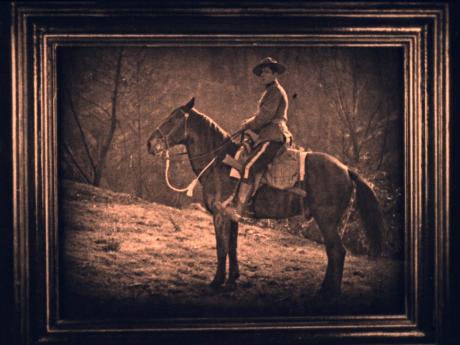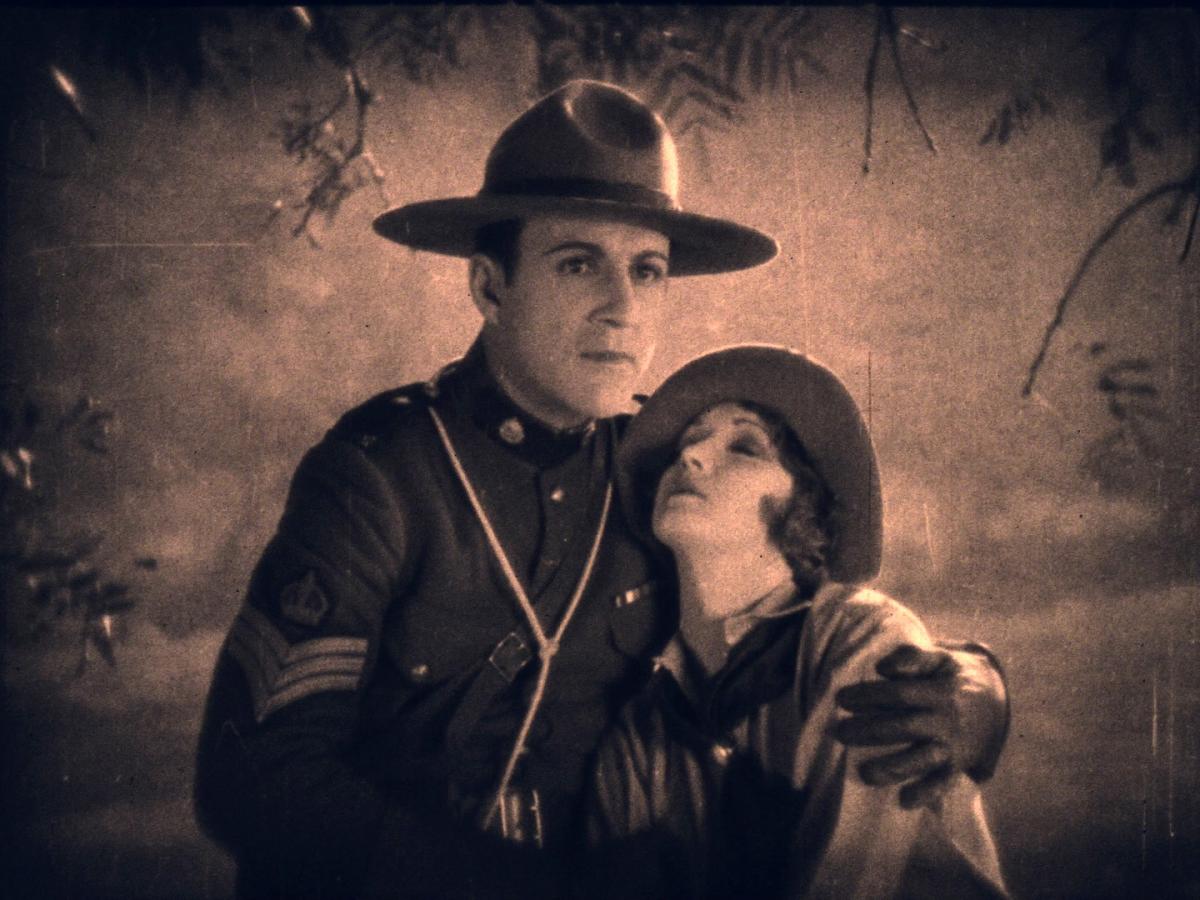
Universal, 1928. Director: Henry MacRae. Scenario: George H. Plympton, William Lord Wright. Camera: George Robinson. Cast: Rex (King of the Wild Horses), Jack Perrin, Helen Foster, Al Ferguson.
My friend Ben Model has become practically a one-man franchise in recent years. Not only has he distinguished himself as a musical accompanist for silent films, he also administers Undercrank Productions, a small independent label that issues a delightful selection of unconventional silents on DVD and Blu-Ray. Let the major labels release the great masterpieces of the silent era (as, thankfully, they do); Undercrank fills in with the little-known, the obscure, the rarities that seasoned aficionados have longed to see. Needless to say, that specialty aligns well with the aims of this column, and in the past I’ve commented on more than one Undercrank release in this space.
One of the intriguing Undercrank offerings is a series called Accidentally Preserved. While libraries and archives scramble to preserve our silent-film heritage from primary 35mm elements, some silents have survived in an alternative form: as 16mm safety prints. After a film’s theatrical run in the 1920s was finished, secondary services such as the Kodascope Library might contract to release it to the “home movie” market on 16mm. These “home” editions were occasionally condensed from their original length, but their pictorial quality was surprisingly good for 16mm. And because they were printed on safety stock, rather than the unstable nitrate base of the theatrical versions, they are sometimes the only surviving versions of key silents. This month will see the release of Volume 5 in the Accidentally Preserved series, and like the other volumes, it’s a wonderful grab-bag of these offbeat and previously unseen films.
One of the features in this collection is Hoofbeats of Vengeance, a Universal Western of 1928. Universal made its share of distinguished silents, and today we tend to think first of celebrated classics like Foolish Wives or The Phantom of the Opera (as we should)—but the studio had built its brand on a steady output of low-budget program pictures, Westerns in particular. Hoofbeats of Vengeance is a reminder that modest Westerns were still a staple of Universal’s product, even at the end of the silent period. All good guys, bad guys, and fast action, it’s a film tailor-made for the Saturday matinee audience.
The top-billed star of the picture is Rex, the King of the Wild Horses. Kevin Brownlow has written of this magnificent animal’s history: wild, spirited, released as a colt to roam the Colorado range, later captured and trained with great difficulty. In the mid-1920s Rex had been featured in silent Westerns by Hal Roach—the same Hal Roach who was concurrently transforming the face of American screen comedy—before being sold to Universal. In this film, the title Hoofbeats of Vengeance is not merely a careless turn of phrase: the premise of the story is Rex’s mission to avenge the murder of his beloved owner. This he accomplishes by locating and identifying the murderer, an American smuggler currently wanted by the Northwest Mounted Police, and then leading the Mounties to their man. The villain’s horse is likewise cunning and determined to evade capture, and indeed the animals in this story are not infrequently more intelligent than their human counterparts. One remarkable sequence even pictures a confrontation between the good horse and the bad horse, complete with dialogue titles and a curiously staged and filmed physical skirmish!
Of course there is also a human cast, headed by B-Western star Jack Perrin.  Of the many cowboy stars who rode the range in Hollywood’s golden age, only a few are well remembered today. Perrin is one of the forgotten majority. But during the 1920s and ’30s he enjoyed a loyal young fan base who eagerly consumed his regular output of Westerns—many, like this one, featuring appearances by Rex, as well as Perrin’s own horse Starlight. The leading lady, Helen Foster, was likewise a familiar face in low-budget pictures but is little remembered today. In Hoofbeats of Vengeance she’s appropriately pretty and charming, and plucky enough to wield a shotgun when threatened by the smugglers. Similarly, Al Ferguson, the chief villain here, was not one of the front rank of movie bad guys, but his rough ways and snarling visage carried him through a long string of B pictures well into the sound era.
Of the many cowboy stars who rode the range in Hollywood’s golden age, only a few are well remembered today. Perrin is one of the forgotten majority. But during the 1920s and ’30s he enjoyed a loyal young fan base who eagerly consumed his regular output of Westerns—many, like this one, featuring appearances by Rex, as well as Perrin’s own horse Starlight. The leading lady, Helen Foster, was likewise a familiar face in low-budget pictures but is little remembered today. In Hoofbeats of Vengeance she’s appropriately pretty and charming, and plucky enough to wield a shotgun when threatened by the smugglers. Similarly, Al Ferguson, the chief villain here, was not one of the front rank of movie bad guys, but his rough ways and snarling visage carried him through a long string of B pictures well into the sound era.
In other words, Hoofbeats of Vengeance is a good example of the fare that brought audiences back to Saturday matinees week after week. And that “B picture” designation is no indication of inferior filmmaking. On the contrary, the Western production units at Universal were well-oiled machines, and director Henry MacRae and his crew show a practiced hand here, filling this film with bravura stylistic flourishes. Uncredited cameraman George Robinson makes a particularly strong showing. The film’s opening shot, a rapid tracking closeup of galloping hooves bearing down on the camera, plunges the audience into the action from the beginning. That same shot recurs throughout the picture as a kind of leitmotif, increasingly superimposed on closeups of Al Ferguson and mirroring his paranoia as he senses the forces of justice closing in on him, led by the vengeful Rex. It’s a striking cinematic device, and it culminates in a nightmarish moment at the story’s climax, as the terrified Ferguson breaks under the pressure and blurts out his confession.
Hoofbeats of Vengeance is only one of four silent rarities showcased in this edition of Accidentally Preserved. All of them feature stirring musical accompaniment, not by Ben Model, but by Jon Mirsalis, who also restored the films in this set. (Parenthetically: It’s been a joy to watch the full-time musical accompanists of silent films form a loose-knit worldwide community in recent decades. One might have expected them to display a bitter rivalry among themselves. Instead, it’s a pleasure to report that they have shown a professional collegiality and invariably support each other’s efforts.) Once again, we who love silent film have reason to celebrate the release of a new physical-media collection.

